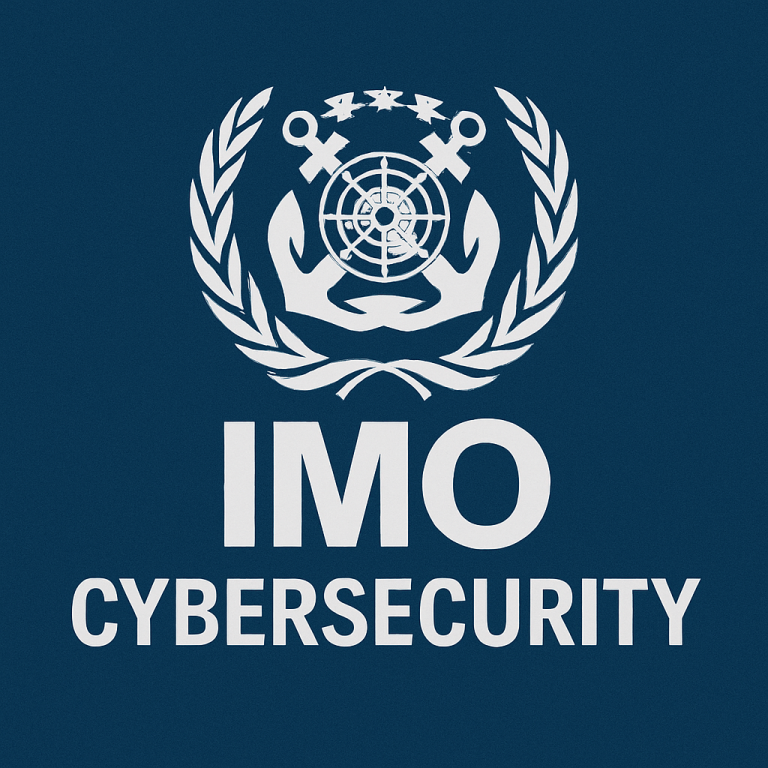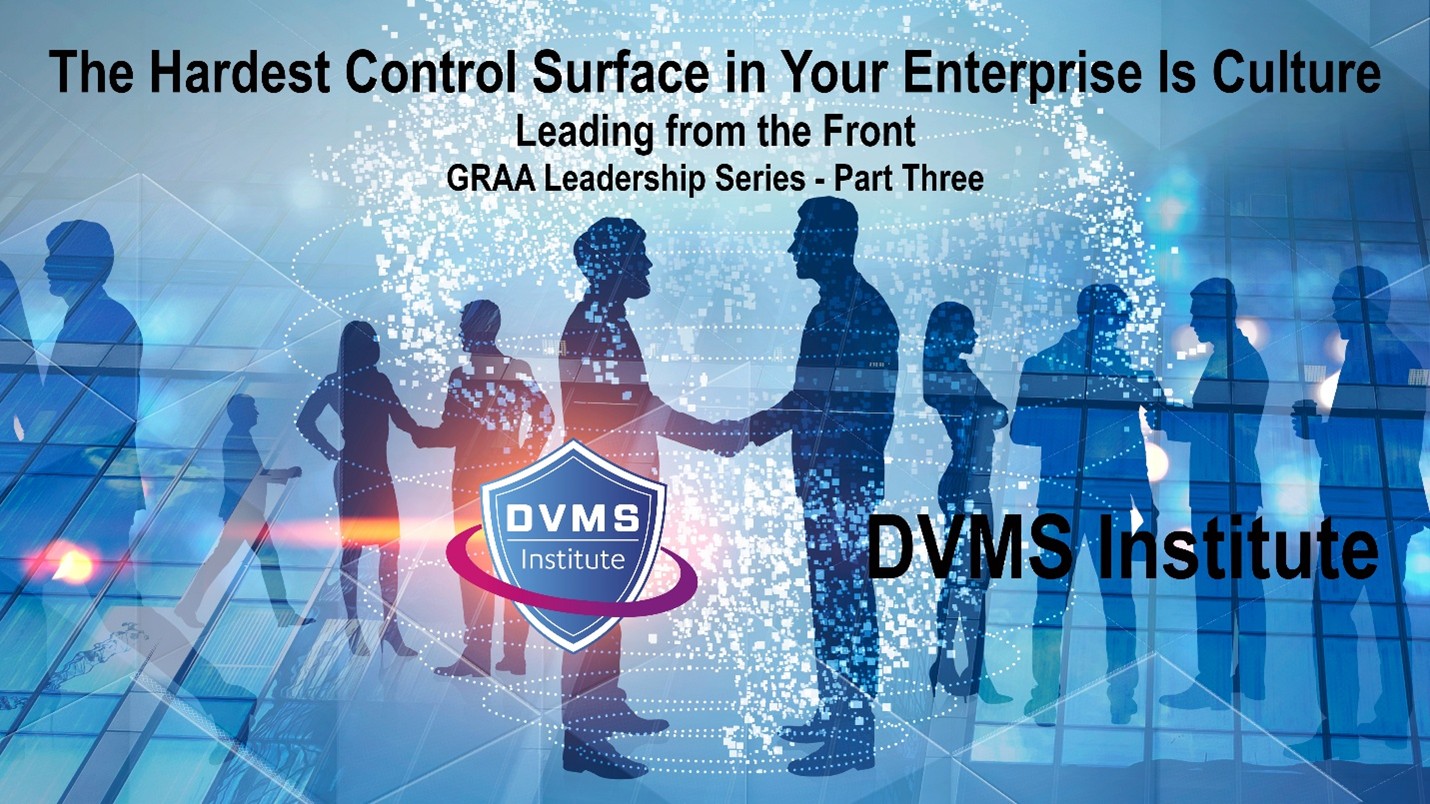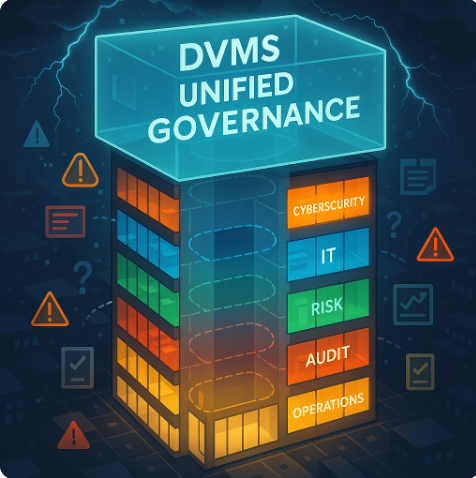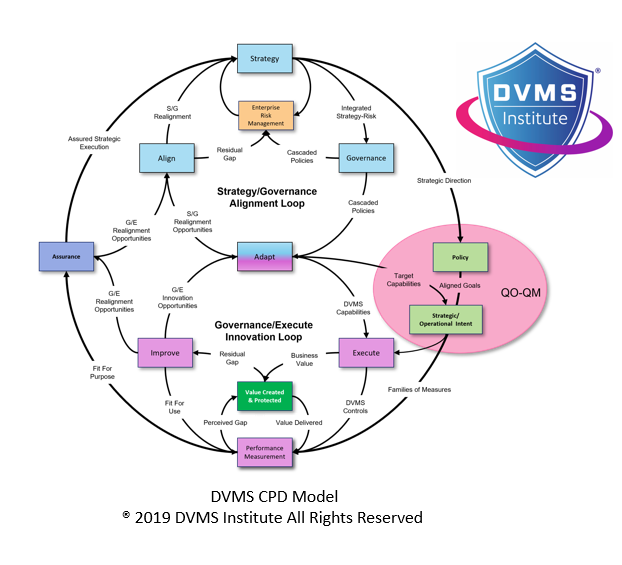The IMO Maritime Cyber Risk Management Guidelines and DVMS Institute NIST Cybersecurity Framework Digital Value Management System®
Rick Lemieux – Co-Founder and Chief Product Officer of the DVMS Institute
In response to the growing threat of cyber incidents in the maritime sector, the International Maritime Organization (IMO) published its Maritime Cyber Risk Management Guidelines, emphasizing the need for vessel owners, operators, and other maritime stakeholders to integrate cybersecurity into their existing safety and security management practices. These guidelines recommend that maritime organizations assess, identify, and mitigate cyber risks through structured and repeatable processes embedded into broader safety and operational frameworks.
To meet these expectations, the DVMS Institute’s NIST Cybersecurity Framework (NIST-CSF) training programs, centered on the Digital Value Management System (DVMS) and implemented through the FastTrack™ phased approach, offer a practical, systemic method to operationalize maritime cyber risk management. The DVMS training aligns with IMO’s intent to integrate cybersecurity into business governance, supply chain assurance, operational resilience, and cultural readiness, delivering compliant, enduring, and adaptive outcomes.
Alignment with IMO Objectives Through Systemic Integration
The IMO guidelines call for cyber risk management to be integrated into existing safety management systems (SMS). This mirrors the DVMS Institute’s core philosophy: cybersecurity must not be bolted on but woven into an organizational operational and strategic fabric. The DVMS training teaches practitioners to align cybersecurity with business goals using the CPD Model (Create, Protect, Deliver). This model connects cyber risk with digital value, ensuring protection mechanisms are tailored to the specific operational context of maritime assets and services.
Instead of treating controls as technical checkboxes, the DVMS overlays the NIST-CSF 2.0 functions—Govern, Identify, Protect, Detect, Respond, and Recover—with actionable organizational capabilities via the Z-X Model. These include minimum viable capabilities like Govern, Plan, Execute, and Assure, all of which directly reflect the IMO’s call for organizational accountability, proactive risk identification, and operational implementation of risk mitigation.
Cyber Risk Assessment and Management Across Vessel and Shore
The IMO highlights the need for risk-based approaches, encouraging organizations to tailor their cyber risk posture based on asset criticality and operational impact. DVMS training addresses this through its strategy-risk integration, which reframes risk not as a siloed activity but as a function embedded within strategic governance loops. Using the Plan and Design capabilities, maritime stakeholders learn to evaluate the digital systems supporting onboard navigation, cargo handling, propulsion, and communication and determine how risk exposure in each system could threaten operational safety.
For example, in Phase 0 of the DVMS FastTrack™, organizations are taught to align cybersecurity planning and policies with business objectives and external regulatory mandates like the IMO guidelines. They begin by mapping existing operational technology (OT) systems, conducting role-based awareness training, and developing incident response and contingency plans tailored to vessel and port operations. As they progress through Phase 1 and beyond, these capabilities mature and optimize, ensuring the ability to mitigate risks across IT and OT environments in compliance with the IMO’s expectations.
Protecting Against Threats to Safety, Navigation, and Operational Integrity
The IMO’s guidelines emphasize protecting critical systems related to ship navigation, propulsion, communication, and cargo handling—systems that, if compromised, can directly endanger vessel safety and marine environments. DVMS programs instruct participants to use the NIST-CSF Protect function to identify and implement tailored safeguards that address these maritime-specific risks. More importantly, these safeguards are not deployed in isolation; they are embedded in Design, Execute, and Change capabilities that are matured following risk-informed decision-making frameworks.
For instance, configuration management—a control required by both NIST and IMO—is covered extensively in DVMS Phase 1. Here, maritime organizations are trained to establish secure baselines for onboard systems, validate hardware/software inventories, and maintain updated protocols that prevent outdated systems from becoming entry points for attackers. These steps ensure compliance with IMO’s directive to protect operational technology systems interacting with external networks, suppliers, and regulatory entities.
Incident Preparedness and Response Consistent with IMO Guidelines
A key IMO requirement is the ability to respond to and recover from cyber incidents in a way that supports the ship’s continued safe operation. DVMS training operationalizes this through the NIST-CSF Respond and Recover functions, integrated into DVMS’s incident and contingency planning practice areas. In Phase 0, organizations build initial incident response capabilities; by Phase 2, they have matured, tested, and continuously updated plans that include roles, communications strategies, and operational contingencies for shipboard and shore-based environments.
Importantly, DVMS emphasizes the dual perspective of the implementor and auditor, ensuring that recovery plans are not just written but are auditable, tested, and tied to measurable outcomes. This level of rigor is essential for compliance with IMO’s recommendations on continuous improvement and verification of cyber preparedness.
Maritime Supply Chain Risk Management and Third-Party Assurance
The IMO cyber guidelines recognize that cybersecurity risks are not limited to onboard systems but extend to suppliers, ports, and other external digital interfaces. The DVMS responds directly to this through robust supply chain risk management (SCRM) practices. The Plan capability within the Z-X Model includes the development of supply chain risk criteria, assessment processes, and cybersecurity posture requirements for all third-party vendors—key outcomes aligned with the IMO’s recommendations.
Maritime operators using the DVMS are trained to manage upstream and downstream risk following strategy-risk-informed policies, ensuring that providers of navigation systems, maintenance contractors, cargo software vendors, and cloud service providers meet minimum cyber hygiene standards. These outcomes are tracked across the Governance/Assurance and Governance/Execution loops of the CPD Model, reinforcing oversight and continuous monitoring.
Training, Culture, and Awareness—Cornerstones of IMO Readiness
A recurring theme in the IMO’s guidelines is the importance of a cyber-aware culture throughout the organization—from bridge officers to port IT managers to shore-based leadership. The DVMS Institute prioritizes this cultural component in every phase of its training. Through tools like the DVMS Culture Assessment Tool (DVMS-CAT™) and structured awareness programs, the training instills a role-based, accountability-driven mindset that aligns with IMO’s call for top-to-bottom readiness.
Cyber risk awareness is contextualized regarding system usage, business continuity, and life safety at sea. This is a crucial distinction in maritime, where cyber events can have real-world kinetic consequences. DVMS training ensures every participant understands this broader context and provides the capability-building to integrate awareness into daily operations, crew training schedules, and SMS documentation.
Beyond Compliance—Operationalizing Maritime Cyber Resilience
The DVMS Institute’s NIST-CSF training programs go far beyond essential compliance. They provide maritime stakeholders with a comprehensive, systems-oriented method to meet and exceed the IMO Cyber Risk Management Guidelines. By integrating risk management with digital value delivery, embedding controls into existing operations, and aligning organizational behaviors with safety and performance objectives, DVMS training transforms maritime cybersecurity into a resilience capability.
Through the DVMS’s CPD Model, Z-X capabilities, and FastTrack maturity phases, maritime organizations can adapt to the changing threat landscape, maintain regulatory compliance, and ensure global shipping operations’ continued safety and effectiveness.
About the Author

Rick Lemieux
Co-Founder and Chief Product Officer of the DVMS Institute
DVMS Institute is a renowned provider of accredited (APMG International), Assured (NCSC-GCHQ-UK), and Recognized (DHS-CISA-NICCS-USA) NIST Cybersecurity Framework, Digital Value Management System® body of knowledge publications, certification trainings, assessment platforms and real-life desktop simulation trainings.
The Institute’s NIST Cybersecurity Framework Digital Value Management System® certified training programs teach businesses of any size, scale, or complexity the skills to build a Performance Driven Overlay System for Cyber Resilience capable of anticipating and mitigating the systemic risk digital businesses face today.
By embedding systemic risk management into strategic decision-making and aligning it with employee cultural values, organizations can build resilience—a dynamic capability to withstand digital business disruption and comply with any cybersecurity regulation (SEC, UK, DORA, NIS2, SAMA, SOCI, IMO, etc.) or maturity model mandates (HITRUST, CMMC, C2M2 etc.).
® DVMS Institute 2024 All Rights Reserved




